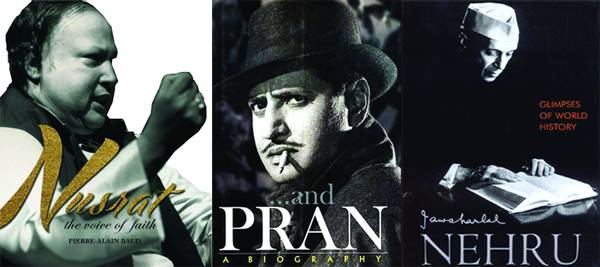
Glimpses of World History
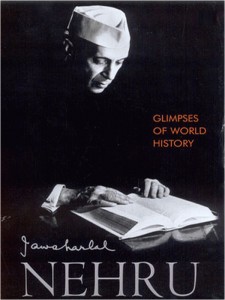
Jawaharlal Nehru
Penguin Books [paperback], 2004
PRs 1,795
Written by Jawaharlal Nehru in 1934, Glimpses of World History is a panoramic sweep of human history. It is a collection of 196 letters written between 1930 and 1933 to his daughter Indira, then thirteen years old. Written over the span of thirty months, when Nehru was imprisoned in various places by the British, the book starts off with one he sends his daughter on her birthday. He says he is sad about not being able to send her any ‘material’ gift from prison, so he will try to give her something he can ‘afford’: a series of letters from his heart.
Written at a time when Nehru had no recourse to reference books or a library but only to his personal notes, Glimpses of World History contains the history of humankind from 6000 BC to the time of writing the book. It covers the rise and fall of great empires and civilizations from Greece and Rome to China and West Asia; great figures such as Ashoka and Genghis Khan, Gandhi and Lenin; wars and revolutions, democracies and dictatorships.
He wrote about many cultures across the globe in detail because, as he himself said, he didn’t like the way history was taught in schools where it was confined to the history of a single country – and that too narrow. He wanted his daughter to know why people did what they did, and this was possible only through knowing the history of the whole world. Written in informal language, with mention of contemporary and personal events, this book reflects Nehru’s world-view and his grasp of history – perhaps one of the first attempts at historiography from a non-Eurocentric angle.
What people are saying: “One of the most remarkable books ever written… Nehru makes even H. G. Wells [The Outline of History] seem singularly insular… One is awed by the breadth of Nehru’s culture.”
From the book: “Most of us think of empires... like the British in India, and we imagine that if the British were not in actual political control of India, India would be free. But this type of empire is already passing away, and giving way to a more advanced and perfected type. This latest kind of empire does not annex even the land; it only annexes the wealth or the wealth producing elements in the country. By doing so it can exploit the country fully to its own advantage and can largely control it, and at the same time has to shoulder no responsibility for governing and repressing that country. In effect both the land and the people living there are dominated and largely controlled with the least amount of trouble.”
Sahib: The British Soldier in India (VINTAGE)
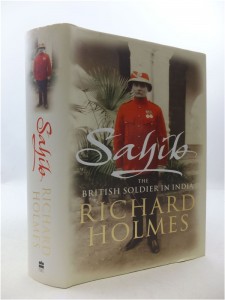
Richard Holmes
HarperCollins Publishers [hardback], 2005
PRs 1,295
From bestselling author of Tommy and Redcoat, the rich history of the British soldier in India from Clive to the end of empire considered to be the jewel in Britain’s imperial crown. Sahib is a broad and sweeping military history of the British soldier in India, but its focus, like that of Tommy and Redcoat before it, will be on the men who served in India and the women who followed them across that vast and dusty continent, bore their children, and, all too often, mopped their brows as they died.
The book begins with the remarkable story of India’s rise from commercial enclave to great Empire, from Clive’s victory of Plassey, through the imperial wars of the 18th century and the Afghan and Sikh Wars of the 1840s, through the bloody turmoil of the Mutiny and the frontier campaigns at the century’s end. With its focus on the experience of ordinary soldiers, Sahib explains to us why soldiers of the Raj had joined the army, how they got to India and what they made of it when they arrived.
The book examines Indian soldiering in peace and war, from Kipling’s “snoring barrack room” to storming parties assaulting mighty fortresses, cavalry swirling across open plains, and khaki columns inching their way between the hills. Making full use of extensive and often neglected archive material in the India Office Library and National Army Museum, Sahib does for the British soldier in India – whether serving a local ruler, forming part of the Indian army, or soldiering with a British regiment – what Tommy has done for the ordinary soldier in World War I.
What people are saying: “Holmes is a passionate and richly entertaining champion of the rank and file” (Daily Telegraph).
Nusrat: The Voice of Faith (audio CD included)
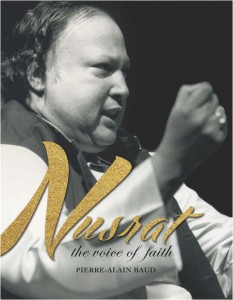
Pierre-Alain Baud
HarperCollins Publishers [paperback], 2015
PRs 1,395
Regarded as the Pavarotti of the East and Shahenshah-e-Qawwali, Nusrat Fateh Ali Khan was the man with the magical voice. With over 300 albums to his credit (which have sold in the millions), his all-consuming mission was to spread the message of the Sufi poets and mystics. A man of deep simplicity and someone truly of his time, Nusrat made Sufi music a global favourite. This book is a personal account of the great qawwal’s life as observed by Pierre-Alain Baud, who was overcome with emotion when he heard Nusrat during his very first concerts in France in 1985. A charming account, it is replete with anecdotes from Baud’s travels with the artiste to various shows across the world and in Pakistan until his untimely death in 1997.
… And Pran: A Biography (VINTAGE)
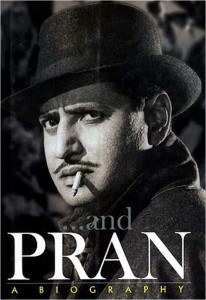
Bunny Reuben
HarperCollins Publishers [hardback], 2005
PRs 1,000
This book is the riveting life-story of Indian cinema’s most memorable villain. For the better part of the twentieth century, he was recognized as the eponymous “bad man” of Indian cinema. Whether a sadistic despot or a malicious village bully, a dissolute city animal or a wicked anti-national, Pran portrayed the infinite shades of evil with consummate ease. Such was his impact that, if for centuries, not a single person has been named Ravana, then for over three decades after Independence, almost no male child was named Pran – because he was “branded” as the personification of evil.
While Pran perfected the art of portraying evil in all its dimensions, he also immortalized the “good” image in some of the most memorable characterizations ever seen on the Indian screen. Whatever the role, each performance was suffused with originality and imagination. With his highly stylized mannerisms, unusual get-ups, realistic make-up and different accents, Pran succeeded in rising above the ordinary: turning stereotypes into unforgettable characters.
This biography unveils the life and times of one of India’s most important actors. Not only does it bring to light a career that spans more than six decades and 350 films, but it also presents an intimate portrait of the man behind the image.
Habib Tanvir: Memoirs
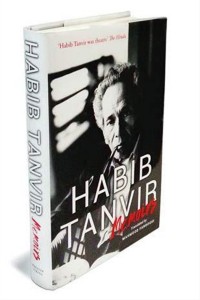
Transl. Mahmood Farooqui
Penguin [hardback], 2013
PRs 1,195
Habib Tanvir (1923–2009) planned his memoirs as a three-part autobiography, which he started writing in his 80s. Unfortunately, he had only finished one volume till his death in June 2009, covering his life till 1954. It is very likely the first instance where a memoir was first published in translation: the Urdu original was published a few days after the release of this fine translation by Mahmood Farooqui in English.
As the man who brought the popular and the demotic into modern Indian theatre, Tanvir is one of Asia’s most important and gifted theatre directors. In these memoirs, touching on both the private and the public aspects of his life with startling candour, he takes us on a journey from his childhood in Raipur to the Bombay film world of the 1940s and thence to the Indian People’s Theatre Association, offering an invaluable window into twentieth-century India.
Whether he is describing his family members, friends or his actors, Tanvir is superbly observant and sharply insightful, capturing both the quotidian and the quirky in his distinct style and delightful voice, and the ease of Farooqui’s translation matches the lively cadence of Tanvir’s prose. Written with great warmth, humour and insight, these memoirs provide a memorable and fully engaging portrait of an extraordinary man.

